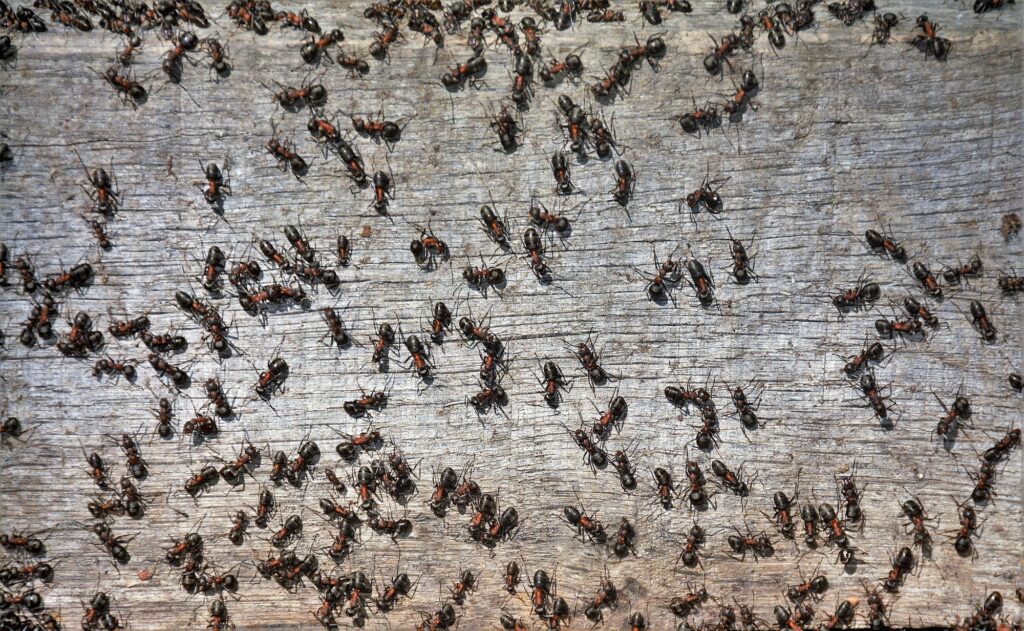Expert Ant Control & Pest Control for Ants in Barnstable County, MA
Expert Solutions to Eliminate Pests from Your Property

Ant Control
At Serv Pest Solutions, we provide expert ant control services throughout Barnstable County, MA. Our team is dedicated to offering top-notch pest control for ants, helping you reclaim your home or business from these pesky invaders. Whether you’re dealing with a small trail of ants or a full-blown infestation, we have the knowledge and tools to address your unique needs.
Effective Pest Control for Ants in Barnstable County, MA
Ants are not just a nuisance; they can also cause damage to your property or contaminate food. Serv Pest Solutions offers comprehensive pest control for ants in Barnstable County, MA, to prevent further problems. Our pest control methods are eco-friendly, effective, and tailored to your specific ant infestation, ensuring long-term solutions that keep your property ant-free.
Why Choose Serv Pest Solutions for Ant Control in Barnstable County, MA?
- Experienced Technicians: Our technicians are highly trained in the latest pest control techniques to handle ant infestations of any size effectively.
- Eco-Friendly Solutions: We use environmentally friendly products to ensure the safety of your family, pets, and the surrounding ecosystem.
- Comprehensive Services: From inspection to treatment and follow-up visits, we offer a full range of services to ensure your home or business stays free of ants.
- Local Expertise: As a local company, we understand the unique pest challenges of Barnstable County, MA, and are committed to providing tailored solutions.


Get in Touch with Serv Pest Solutions for Ant Control
If you’re dealing with ants in Barnstable County, MA, don’t wait for the infestation to worsen. Contact Serv Pest Solutions today to schedule a thorough inspection and take the first step toward a pest-free environment!
FAQ's
What types of ants do you treat in Barnstable County?
We treat various ant species, including carpenter ants, sugar ants, and pavement ants, providing targeted solutions based on the specific type of infestation in Barnstable County.
Why are ants such a problem for homes and businesses in Barnstable County?
Ants can invade homes and businesses seeking food or shelter, causing structural damage, contamination, or allergic reactions, making them a significant problem for property owners in Barnstable County.
How can I prevent ants from invading my home or business?
Preventing ants involves sealing entry points, cleaning up food crumbs, and eliminating moisture sources. Regular inspections and professional treatments also help keep ants away from your property.
How long does it take to eliminate an ant infestation?
The time to eliminate an ant infestation depends on its severity. Typically, it may take a few days to a week for complete eradication, following a tailored treatment plan.
Do you offer free pest inspections?
Yes, we offer free pest inspections to assess the extent of infestations and provide effective treatment options for both residential and commercial properties in Barnstable County.
Are your ant control treatments safe for children and pets?
Our ant control treatments are designed to be safe for children and pets. We use environmentally friendly and low-toxicity solutions to ensure safety while effectively controlling the infestation.
Pest Control Service Packages
Shield Guard Package
Basic
Quarterly Pest Control Service (4 per year)
Unlimited call-back services
Initial comprehensive treatment
Coverage for 15+ common pests
Basic rodent and tick control
Foundation and perimeter treatment
Crack and crevice treatment
De-webbing and nest removal
Crawl space inspection (as needed)
Annual termite inspection
Service guarantee
Fortress Guard Package
Popular
Includes everything in the Shield Guard package, plus:
Enhanced pest control covering 30+ pests
Comprehensive mosquito and tick control
8 treatments per year (March through October)
Mosquito warranty
Tick warranty
Expanded coverage for hard-to-treat pests
More intensive treatments and inspections
Citadel Guard Package
Advanced
Includes everything in the Shield Guard package, plus:
Comprehensive pest control covering 45+ pests
Advanced termite protection program
Termite baiting system installation
Bi-annual termite inspections
Termite retreat warranty
Enhanced rodent and tick control
Expanded coverage for hard-to-treat pests
Priority scheduling for all services
Sovereign Guard Package
Premium
Includes everything in the Shield Guard, Fortress Guard, and Citadel Guard packages, plus:
Ultimate pest protection covering 60+ pests
Comprehensive year-round service: 4 quarterly general pest control treatments
8 mosquito and tick treatments (March - October)
Advanced termite protection
Termite baiting system
Bi-annual termite inspections and treatments
Enhanced rodent control
Premium service warranty
Priority scheduling and response
Customer Reviews
See why so many MA homeowners trust ServPest to get rid of all their pest problems
Posted onTrustindex verifies that the original source of the review is Google. Cody responded promptly to our request for help and thoroughly inspected our property. Very helpful.Posted onTrustindex verifies that the original source of the review is Google. Excellent service and attention to detail. Highly recommend Servpro Pest solutions!Posted onTrustindex verifies that the original source of the review is Google. Cody is definitely the bug whisperer. He has a knack for getting rid of those pesky little ants!!!Posted onTrustindex verifies that the original source of the review is Google. Cody was very knowledgeable & timely. The process was easy to understand and affordable for the service he provides.Posted onTrustindex verifies that the original source of the review is Google. Friendly. Timely. Professional. Knowledgeable.Posted onTrustindex verifies that the original source of the review is Google. Per usual, Cody went beyond his duty. Efficient and always trusted service Thank YouPosted onTrustindex verifies that the original source of the review is Google. Cody was at our home in Chatham 30 minutes after we called him on a Saturday! He inspected the ant issue, gave us a fair quote and took care of our issue.Posted onTrustindex verifies that the original source of the review is Google. very professional does everything he says he's going to do.Posted onTrustindex verifies that the original source of the review is Google. Cody is very knowledgeable, personable and wants to resolve our pest problem as much as we do! Definitely would recommend!Posted onTrustindex verifies that the original source of the review is Google. Cody did a great job! Highly recommend !!!!

